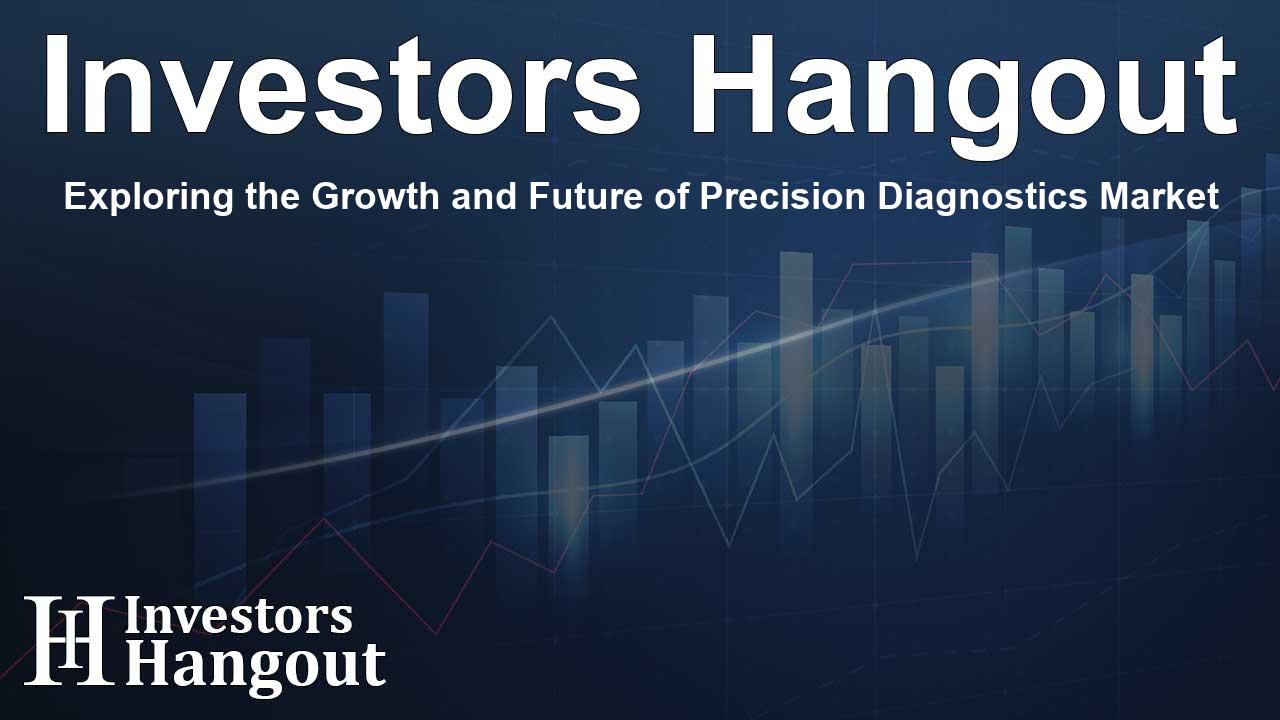Exploring the Growth and Future of Precision Diagnostics Market

The Booming Precision Diagnostics and Medicine Market
The global precision diagnostics and medicine market is undergoing an impressive transformation, projected to reach a remarkable value of $246.66 billion in the coming years. This growth rate corresponds to a compound annual growth rate (CAGR) of 11.1%. This surge in the market size can be attributed to several pivotal factors including the increasing integration of innovative technologies such as artificial intelligence (AI) and machine learning (ML) that enhance the development of precision diagnostics and medicine.
Driving Forces Behind Market Growth
One of the key drivers of this market expansion is the collaboration between pharmaceutical and diagnostics firms aiming to improve precision healthcare. These partnerships are essential as they focus on delivering customized healthcare solutions tailored to individual patient needs. Additionally, the growing trend of direct-to-consumer testing is making precision diagnostics more accessible to the general public, further propelling growth.
Emerging Applications and Opportunities
Another factor is the broadening scope of precision healthcare applications into various disease areas. The rising adoption of wearable health devices is also contributing to enhanced precision healthcare. Companies are now exploring new markets by establishing research and manufacturing facilities in developing economies, maximizing their reach and potential customer base.
Market Segmentation Insights
The precision medicine market can be segmented based on several criteria. Products are categorized into categories such as inhibitor drugs, monoclonal antibodies, cell therapies, and other therapeutic products. Monoclonal antibodies dominate this market segment due to a large volume of approved therapy solutions targeting serious health conditions, including different types of cancers.
Oncology Leads the Precision Diagnostics Segment
When looking at the indications for precision diagnostics, oncology prevails as the largest market segment. Increased incidence rates of cancer globally have heightened the demand for accurate diagnostic tests, which are crucial for early identification of the disease. Life sciences companies are heavily investing in the development of advanced diagnostic tests to cater to this demand.
Geographical Market Performance
The precision medicine market is distinguished into geographical regions and North America holds significant dominance, followed closely by Europe. Notably, the Asia Pacific region is witnessing the most substantial growth potential during the forecast period, driven by a growing awareness of personalized treatments and favorable policies that support the adoption of precision medicine.
Key Players Reshaping the Market
Several key players are making impactful strides in the precision diagnostics market. Companies like F. Hoffmann-La Roche Ltd, Gilead Sciences, Agilent Technologies, and Guardant Health are notable contributors with their extensive portfolios of advanced precision medicine products. F. Hoffmann-La Roche maintains a comprehensive range of FDA-approved therapeutic products and diagnostics.
Innovative Solutions by Leading Companies
Gilead Sciences is recognized for its innovative biopharmaceutical products aimed at enhancing patient outcomes in precision care. They have expanded their footprint across numerous countries to provide tailored therapies. Similarly, Agilent Technologies is a dominant force in the life sciences space, focusing on diagnostics, genomics, and providing tailored companion diagnostics solutions.
Guardant Health specializes in cutting-edge liquid biopsy tests, significantly improving cancer detection and treatment optimization. Their continuous innovation and strategic collaborations position them as a leader in precision oncology.
Future Prospects of the Precision Diagnostics Market
As the precision diagnostics and medicine market continues to evolve, the emphasis on technological integration and strategic partnerships will be paramount. The infusion of AI and advanced analytics into ongoing medical research reflects the commitment of industry leaders to enhance patient outcomes. Ultimately, by embracing these advancements, the precision diagnostics market is poised for sustained growth in the years ahead.
Frequently Asked Questions
What is the projected market size for precision diagnostics by 2029?
The precision diagnostics market is projected to reach approximately $246.66 billion by 2029.
Which factors are driving the growth of precision medicine?
The growth is driven by AI and ML integration, increased collaborations, and expanding applications of precision healthcare.
Who are the major players in the precision diagnostics market?
Key players include F. Hoffmann-La Roche Ltd, Gilead Sciences, Agilent Technologies, and Guardant Health.
Which region holds the largest share in the precision diagnostics market?
North America holds the largest share, with Europe following closely behind.
What role do wearable devices play in this market?
Wearable devices enhance precision healthcare by providing continuous monitoring and real-time data, improving treatment solutions.
About The Author
Contact Ryan Hughes privately here. Or send an email with ATTN: Ryan Hughes as the subject to contact@investorshangout.com.
About Investors Hangout
Investors Hangout is a leading online stock forum for financial discussion and learning, offering a wide range of free tools and resources. It draws in traders of all levels, who exchange market knowledge, investigate trading tactics, and keep an eye on industry developments in real time. Featuring financial articles, stock message boards, quotes, charts, company profiles, and live news updates. Through cooperative learning and a wealth of informational resources, it helps users from novices creating their first portfolios to experts honing their techniques. Join Investors Hangout today: https://investorshangout.com/
The content of this article is based on factual, publicly available information and does not represent legal, financial, or investment advice. Investors Hangout does not offer financial advice, and the author is not a licensed financial advisor. Consult a qualified advisor before making any financial or investment decisions based on this article. This article should not be considered advice to purchase, sell, or hold any securities or other investments. If any of the material provided here is inaccurate, please contact us for corrections.
